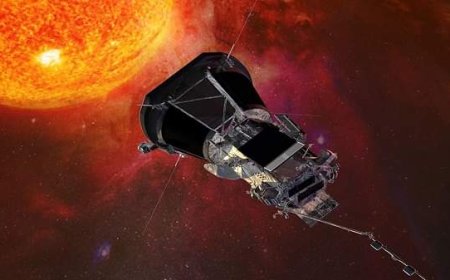Scientists are exploring the Europa satellite in search of extraterrestrial life!
Even if complex life has developed exclusively on Earth within our solar system, scientists theorize that extraterrestrial life might be hidden on other planets or moons scattered throughout the vast universe. However, researchers have not yet found any conclusive evidence or signs of alien life, either within our solar system or beyond.

Recent studies by space scientists have concentrated on our solar system, leading to the theory that advanced alien life forms could be hiding beneath the icy crust of Europa, one of Jupiter's moons, and Enceladus, a moon of Saturn. This investigation has been ongoing since the early 20th century, and despite a 0% success rate, researchers remain persistent.
Europa, covered by a frigid ice layer approximately 3,100 kilometers thick, has an average surface temperature of around -160 degrees Celsius. It orbits Jupiter at a distance of about 5.2 astronomical units (AU) from the Sun. Despite the extreme cold on its surface, there is a possibility of a vast subsurface ocean beneath its nearly 100-mile-thick layer of solid ice.
While Europa's surface is marked by a harsh and icy landscape, the potential oceans beneath could be surprisingly warm, possibly reaching temperatures of -1 degree Celsius or slightly higher. Scientists are quite optimistic about the presence of liquid water in this environment. The proximity of Jupiter, along with its significant gravitational pull, could create substantial tidal forces within Europa.
Slightly smaller than Earth's Moon, Europa is primarily made up of silicate rock and is thought to have an active iron-nickel core. The moon has a thin atmosphere, mostly composed of oxygen, and its entire surface is covered by a thick layer of cold, hard ice. In September 2022, the Juno space probe performed a close flyby of Europa, coming within 320 kilometers of its surface.
Scientists are very optimistic about the presence of water and the potential existence of alien life on moons like Europa or Enceladus, but no definitive evidence has been discovered yet. Moreover, NASA's Clipper space probe was launched on October 14, 2024, for the purpose of conducting an in-depth study of Europa and searching for alien life in the region.
Meanwhile, the Jupiter Icy Moons Explorer (JUICE) mission, sent by the European Space Agency (ESA), was launched on April 14, 2023. This mission aims to study the planet Jupiter and its three major moons. It is expected to send important data about Jupiter and its three largest moons (Ganymede, Callisto, and Europa) in the years 2030 or 2031.
In Hollywood movies and science fiction stories, thousands of alien life forms can be seen outside of Earth. However, in reality, scientists have not yet found any signs of life or extraterrestrial organisms on planets other than Earth. Although scientists from NASA and other countries are doing their best to find evidence of life or other complex organisms beyond Earth, the biggest challenge in this regard is humanity's technological limitations.
Sources: Wikipedia, NASA Science, Space.com, The Planetary Society.


















































